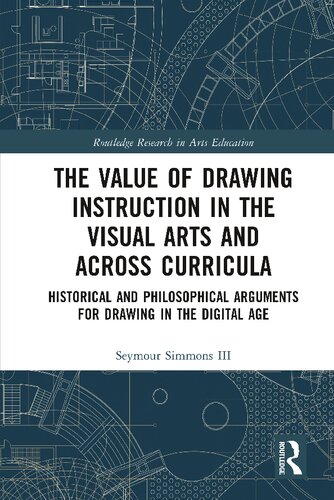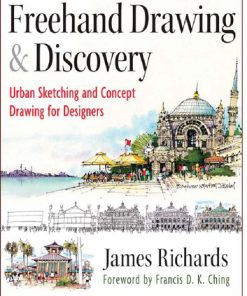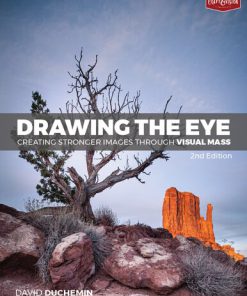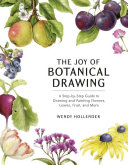The Value of Drawing Instruction in the Visual Arts and Across Curricula Historical and Philosophical Arguments for Drawing in the Digital Age 1st Edition by Seymour Simmons 1138479977 9781138479975
$50.00 Original price was: $50.00.$25.00Current price is: $25.00.
The Value of Drawing Instruction in the Visual Arts and Across Curricula Historical and Philosophical Arguments for Drawing in the Digital Age 1st Edition by Seymour Simmons – Ebook PDF Instant Download/Delivery: 1138479977, 9781138479975
Full download The Value of Drawing Instruction in the Visual Arts and Across Curricula Historical and Philosophical Arguments for Drawing in the Digital Age 1st Edition after payment

Product details:
ISBN 10: 1138479977
ISBN 13: 9781138479975
Author: Seymour Simmons III
By applying philosophical and historical perspectives to drawing instruction, this volume demonstrates how diverse teaching methods contribute to cognitive and holistic development applicable within and beyond the visual arts. Offering a new perspective on the art and science of drawing, this text reveals the often-unrecognized benefits that drawing can have on the human mind, and thus argues for the importance of drawing instruction despite, and even due to contemporary digitalization. Given the predominance of visual information and digital media, visual thinking in and through drawing may be an essential skill for the future. As such, the book counters recent declines in drawing instruction to propose five Paradigms for teaching drawing – as design, as seeing, as experience and experiment, as expression, and as a visual language – with exemplary curricula for pre-K12 art and general education, pre-professional programs across the visual arts, and continuing education. With the aid of instructional examples, this volume dispels the misconception of drawing as a talent reserved for the artistically gifted and posits it as a teachable skill that can be learned by all. This text will be of primary interest to researchers, scholars, and doctoral students with interests in drawing theory and practice, cognition in the arts, positive psychology, creativity theory, as well as the philosophy and history of arts education. Aligning with contemporary trends such as Design Thinking, STEAM, and Graphicacy, the text will also have appeal to visual arts educators at all levels, and other educators involved in arts integration.
The Value of Drawing Instruction in the Visual Arts and Across Curricula Historical and Philosophical Arguments for Drawing in the Digital Age 1st Table of contents:
1. Introduction: Making the Case for Learning to Draw in Changing Times
Drawing on the Whole
Drawing in the Digital Age
“The Death of Drawing”
Personal Perspectives
Continuing Teaching and Research
Making the Case: Drawing Brought to Mind
Examples
Evidence
Explanation
Signs of Changing Times
Publications, Technology, and Educational Initiatives
Institutions and Symposia in Support of Drawing Practice and Research
In Conclusion
Notes
2. Beginnings: Drawing as an Innate Human Capacity and a Matter of the Mind
Drawing at the Intersection Between Mind and Magic
Drawing in Prehistory
Drawing in Ancient Egypt
Drawing in Ancient Greece
Mind, Mathematics, and the Magic of Line
Conceptual Frameworks
Multiple Intelligences
Philosophy
Beginnings of Drawing in Child Development
Studio Thinking: “Develop Craft”
Creative Habits: Beginnings Anew
Sketchbooks
In Conclusion
Notes
3. What’s in a Name?: The Uses of Philosophy in Addressing Drawing Education
The Values of Philosophy
Worrying About Words in Drawing Practice and Teaching
Conceptual Frameworks
Conceptual Framework I: Linguistic Intelligence
Conceptual Framework II: Analytic Philosophy
Definitions and the Challenges of Teaching Art
Aesthetics
Aesthetics in Drawing Instruction
Formalist Aesthetics
Experiential Aesthetics
Art
Design [də’zīn]
Design Drawing Lessons
Drawing
Alternatives to Definitions
In Conclusion
Notes
4. Drawing by Design: Connecting Drawing and Design through Mathematics
Edifici Torre Espiral and the Design Drawing of Zaha Hadid
Drawing by Design across History and Cultures
Conceptual Frameworks
MI Theory
Philosophical Framework
Drawing as Design in the Middle Ages
Alberti and Disegno in the Renaissance
Leonardo on the Significance of Skizzo
Rebirth of the Academy
Drawing by Design for Children
Starting with the Renaissance
Drawing by Design in General Education in the 18th Century
The South Kensington System
Walter Smith and Industrial Drawing in America
20th-Century Responses
Creative and Mental Growth, by Victor Lowenfeld
Teaching Drawing by Design Yesterday and Today
Studio Habits: Envisioning
Professional Perspectives: Drawing by Design in Architecture and Design
In Conclusion
Notes
5. Drawing as Seeing: Observational Drawing in Art, Science, and Medicine
Conceptual Frameworks
Philosophical Framework: Empiricism
MI Theory: Spatial Intelligence
Art and Science under Empiricism
Drawing as Seeing in General Education
Drawing as Seeing in Higher Education: The Teachings of John Ruskin
Letter 1: On First Practice
Letter 2: Sketching from Nature
Letter 3: On Color and Composition
Drawing as Seeing for Children in the 20th Century
Lowenfeldian Stages
Contemporary Approaches to Drawing as Seeing
Studio Thinking and Slow Looking
Contemporary Texts for Drawing as Seeing
Professional Perspectives: Drawing at the Intersection of Art and Natural Science
Drawing in Neuroscience and Morphology
Drawing in Medicine
In Conclusion
Notes
6. Drawing as Experience and Experiment: Creativity in Art and Experimental Science
Experience and Experiment in Drawing Present and Past
Conceptual Frameworks
Pragmatism
Bodily-Kinesthetic Intelligence
Picasso and Pragmatism in 20th-Century Art
The Making of Guernica
Picasso, William James, and Cubism
The Natural Way to Draw by Kimon Nicolaïdes
Beyond Nicolaïdes
Experiential Drawing for Everyone
Figure Drawing in Adult Education
Drawing as Experience and Experiment with Children
Lowenfeld’s “Period of Decision”
A Contemporary Explanation: The U-Shaped Curve
Studio Thinking: Stretch and Explore
Doing and Undergoing in 21st-Century Art Education
Professional Perspectives
Children’s Book Illustration
Theoretical Physics
In Conclusion
Notes
7. Drawing as Expression: Self-Knowledge and Societal Concerns
Drawing as Expression, in Context
Conceptual Framework I: Multiple Intelligence Theory: The Personal Intelligences
Conceptual Framework II: Expressionism, Modernism, and Existentialism
Drawing as Expression: Connecting the Child and the Curriculum
Drawing as Expression in the Middle Ages
Drawing as Expression in Renaissance Humanism
Rembrandt: Drawing on the Personal Intelligences
Modernism in Figurative Art as a Search for Self
Surrealism and Drawing as Expression
Contemporary Issues in Drawing as Expression 1: Art Brut
Contemporary Issues in Drawing as Expression 2: Performance Art and Activism
Drawing as Expression in Higher Education
Leonardo on Interpersonal Intelligences in the Education of Artists
Drawing as Expression in the Academies
Drawing As Expression: A Non-Western Instructional Model
Teaching Drawing as Expression under Modernism: Hans Hofmann’s Figure Drawing Class
Teaching Drawing as Expression under Modernism: Learning to Draw, by Robert Kaupelis
Teaching Drawing as Expression in the 21st Century
Drawing as Expression: PreK-12 Instructional Models
Drawing as Expression: On the Side of the Child
Félix Ravaisson and Drawing in the 19th-Century French Lycée
Drawing as Creative Self-Expression
Friedl Dicker-Brandeis Teaching in Theresienstadt
Viktor Lowenfeld’s Creative and Mental Growth
Drawing as Expression in Holistic Art Education
Drawing as Expression: On the Side of the Curriculum
Discipline-Based Art Education
Visual Culture Art Education
Drawing as Expression: Developmental Issues
Expression and Ethics in Early Childhood Drawing
Viktor Lowenfeld and John Michael on “Adolescent Art”
Studio Thinking: Express: Finding Meaning
Drawing as Expression: Directions in Research and Teaching
On the Side of the Student: Expression in Holistic Drawing Education
Drawing as Expression in Motion
Drawing as Expression in the Service of Wellbeing
Drawing as Expression in Dealing with Negative Emotions
On the Side of the Curriculum: Controversial Issues in Expression
Dealing with Excessive Subjects
The Right to Express versus the Privilege to Exhibit
Drawing as Expression on Display: A Disturbing Day in the Neighborhood
Professional Perspectives
Teaching Art and Art Therapy
Comic Book Artist
In Conclusion
Notes
8. Languages of Drawing: Semiotics and the Search for Fundamentals
Pictures and Words
Conceptual Framework I: Semiotics
Semiotics for the Artist
Semiotics for the Philosopher
Peirce and Drawing
Goodman on Drawing
Drawing Instruction at the Bauhaus
Bauhaus Principles and Practices
The Preparatory Class
Kandinsky’s “Analytic Drawing” at the Bauhaus
Conceptual Framework II: Musical Intelligence
Languages of Drawing: Post-Bauhaus
Drawing as a Graphic Idiom
Alternative Languages
Languages of Drawing from the Beginning
Languages of Drawing PreK-12 Today
Languages of Drawing and Copying
Studio Habits of Mind: Understand Art Worlds: Domains and Communities
Languages of Drawing Across Cultures
Languages of Drawing Beyond “Art Worlds”
Professional Perspectives
Graphic Design, Typography, and the Languages of Drawing
Music and the Languages of Drawing
Collaborative Teaching
In Conclusion: Languages of Drawing Today and Tomorrow
Notes
9. Toward a Comprehensive 21st Century Philosophy of Drawing Education
Drawing for All
Principles of Teaching and Learning
Conceptual Framework I: Curriculum Theory
Curriculum Across the School Years and Across the Lifespan
The Stage of Precision
The Stage of Generalization
Conceptual Framework II: Five Minds for the Future
Studio Habits of Mind: “Engage and Persist” and “Reflect”
An Idea Whose Time Has Come
People also search for The Value of Drawing Instruction in the Visual Arts and Across Curricula Historical and Philosophical Arguments for Drawing in the Digital Age 1st:
7 elements of art value examples
2d visual art
2 value drawing
4 types of value in art
Tags:
Seymour Simmons,Drawing,Instruction,Curricula
You may also like…
Housekeeping & Leisure - Interior Design & Decoration
Business & Economics - Investing
Where the Money Is Value Investing in the Digital Age 1st Edition Seessel
Politics & Philosophy - European & American Philosophy
Engineering
Manual of Engineering Drawing: British and International Standards 5th Edition Colin H. Simmons
Arts - Graphic Arts
Uncategorized
Innovation and the Arts The Value of Humanities Studies for Business 1st Edition Piero Formica
Arts - Photography
Drawing The Eye Creating Stronger Images Through Visual Mass 2nd Edition David Duchemin
Arts - History & Criticism
Arts - History & Criticism











